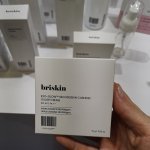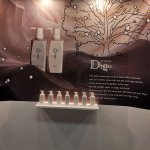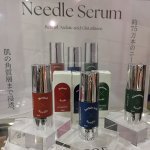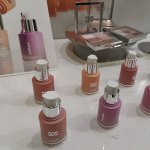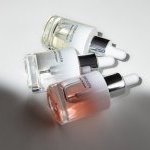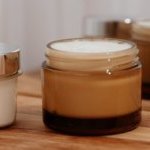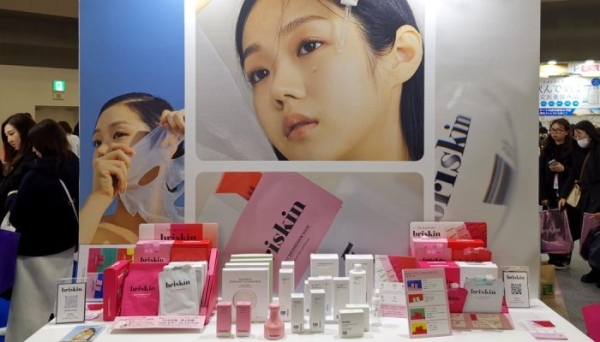
The 2025 edition of Cosme Tokyo took place from 15th to 17th January as part of Cosme Week Tokyo, which also features Cosme Tech (ingredients, packaging, OEM/ODM), Esthec Japan (salon and professional beauty), Cosmetics Marketing Expo (services), Hair Expo Tokyo (hair care) and Inner Beauty (functional foods, beverages and supplements). Walking the aisles of the show, Premium Beauty News walked spotted five essential trends.
According to organisers RX Japan, Cosme Week Tokyo 2025 welcomed a total of 618 exhibitors and 38,266 visitors across all the six shows. This year, the Cosme Tech section was by far the largest show within Cosme Week Tokyo and took place in its own dedicated exhibition halls. At the event, RX Japan also introduced the First Gallery, an exhibition area dedicated to indie and emerging brands and first-time exhibitors at Cosme Tokyo.
Five key trends have emerged this year.

Exosomes, stem cells and IPS at the forefront of anti-aging
Anti-ageing beauty remains the biggest product category at Cosme Tokyo, driven by the presence of K-beauty brands. Amongst the most visible ingredients this year were exosomes and stem cells (traditionally a very popular anti-ageing ingredient in Japan) as well as micro-needle patches and serums.
Another highly interesting anti-ageing technology – leveraged from the field of regenerative medicine – was iPS (induced pluripotent stem cells). First discovered at Kyoto University in 2006 (the researchers were awarded a Nobel in 2012), iPS stem cell technology can rejuvenate aged cells and has great potential in the diagnosis and treatment of all kinds of diseases. A few Japanese beauty brands have successfully integrated iPS cells into cosmetic formulas. This is the case of Rejuinc with its new Repluri Serum.

Makeup and hair care goes skinification
Whilst anti-ageing ingredients are still most strongly represented in facial skin care, they have also reached other product categories, such as hair care, colour cosmetics or body care.
Japanese beauty brand Eternam’s new range of tinted anti-ageing lip serums, for example, contains umbilical cord blood stem cells, combined with peptides, arnica flower extract and plant oils. These serums claim to moisturise and plump up lips whilst adding a hint of colour. There is also a clear serum for use at night time.
Japanese indie brand Digo Future has added exosomes and human stem cells to its new shampoo for mature hair, while domestic salon manufacturer Wave Corporation’s Spa Treatment brand has been updating its existing product ranges with the latest cosmetic technologies. The Spa Treatment HAS Stretch i Sheet undereye mask, for example, was recently relaunched with an extra dose of human stem cell exosomes and a triple peptide complex.
Taiwanese beauty manufacturer Facialbeau introduced its Aquamax Exorigins range of three anti-ageing serums formulated with grapefruit-derived exosomes. And Korean company DOF’s (www.biodof.com) Exocleo Ultimate Skin Rejuvenation Kit includes 5×2 vials with powdered exosomes (based on human umbilical cord blood) and a liquid phase which are mixed together prior to application. Korean skin care brand Briskin offers an entire range formulated with exosomes as signature ingredient – Exo-Glow SecondSkin Cushion contains a triple dose of exosomes for an anti-ageing boost.

Micro-needle beauty
While the self-dissolving micro-needle/spicules trend started in Korea, Japanese brands are now also embracing this cosmetic technology. Needle serums (serums with active ingredients manufactured into microscopically small spikes/needles) very visible at the show.
Sumiboshi’s Leporem face care brand, for example, presented a 3-sku range of needle serums at Cosme Tokyo 2025 – Glutathione, Retinol and Azelaic Acid. Amongst the bestsellers of fellow Japanese brand FractionalCC is the Retinol Serum A which contains a blend of retinol, exosomes, niacinamide and NMN. Wave Corporation’s Spa Treatment brand also showcased a new microneedle undereye mask, the Re:Ti Micro Patch.
Taiwanese brand Pura Vida’s new Liposome Lotion was formulated with an extra highly concentrated dose of 10% liposomes while Korean face care brand Ilso – most famous for its two-part sebum-dissolving nose pore packs – has branched out into a fully-fledged skin care range including four serums heavy on anti-ageing functionality. The brand’s new ER Firming Serum, for example, contains ectoin, retinol and adenosine.

Making beauty fun
Bubble textures (also called “carbonated beauty”) are a Japanese skin care staple and there were a number of new launches in this category at the show.
Japanese femcare brand Seins Mous’ new Champagne Carbone Serum Cream, for example, is a carbonated bubble moisturiser for face, neck, decolleté and bust up. Formulated with carbon dioxide, the creamy foam texture lightly fizzes when it’s massaged into the skin. Actives include cultivated stem cells, NMN and four different skin-plumping and tightening anti-ageing complexes. Scented with notes of lavender, the multipurpose moisturiser promises to deeply hydrate, tighten and refine facial and body contours.
Dr. Medion, one of the Japanese brands that pioneered carbonated beauty, has relaunched its iconic Spaoxy DualgelVC+ daily foam mask which is packaged in an aerosol can that dispenses two different gel formulas. The yellow phase contains the vitamin C derivative APPS, when both phases are mixed they turn into a white creamy foam that is applied to the face and rinsed off after ten minutes.
And Alen International’s Ravissa face and body care brand was extended with a creamy hydrating foam serum formulated with soapwort, edelweiss, cornflower and camomile plant extracts and a blend of different peptides.

Make-up from Korea and China
Most of the makeup ranges presented in the Cosme Tokyo halls were from the Korean exhibitors, like the stylishly packaged line-up of Oddtype, Unleashia’s Sisua Berry Tint Shot lip colour range or the Titto’s cute dual Lip & Cheek gloss creams. Having said that, C-beauty (Chinese beauty) – especially makeup – also made a foray into trendy Japanese beauty stores a couple of years ago. At Cosme Tokyo, the lineup of Chinese makeup brands included Judydoll and Joocyee (both of which are sold in Loft and Plaza stores in Japan).
Another Chinese beauty manufacturer, Chando Himalaya, also made its debut in Japan at the fair, showcasing a wide range of face and body care and a stylishly packaged selection of makeup.
For its part, Mimi Japan debuted fun-looking brand Uhue, offering eye, lip and face makeup products in an eye-catching pack design.
Perhaps drawing inspiration from the Korean competition, Japanese teen makeup brand Yesic showed a preview of what’s to come in summer 2025. Yesic is an entry-level priced makeup brand intended to be sold in trendy Japanese beauty retail chains Loft, Plaza and Donki (Don Quijote) rather than in the drugstore channel. The Yesic range includes cube-shaped blusher and highlighting powder sticks as well as lip creams and glosses, with liquid foundations to come later. The makeup cubes can be attached to little keychains and the anticipated price range of JPY 900-1,500 places this brand in the lower mass market priced category.
Portfolio
